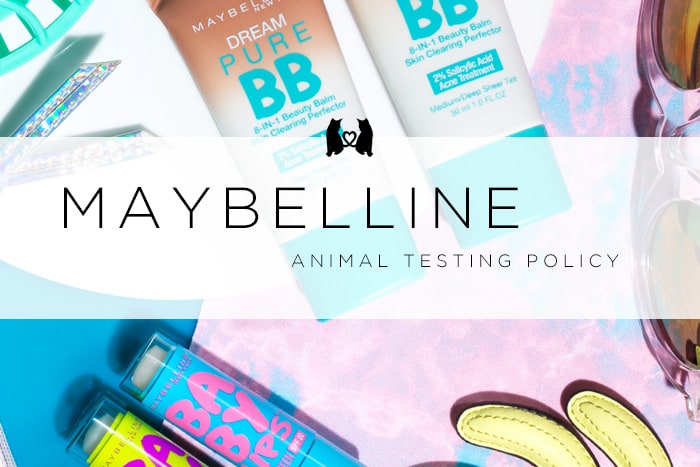Animal testing has long been a contentious issue within the beauty industry, igniting passionate debates among consumers, activists, and corporations alike. The ethical implications surrounding the use of animals for testing products that millions of people use every day cannot be understated. Among the myriad of brands available today, Maybelline often comes under scrutiny regarding its stance on animal testing.
Maybelline, a subsidiary of the multinational cosmetics company L’Oréal, is one of the most recognizable brands globally. Founded in 1915, it has grown into a cultural touchstone, known for its affordable, accessible products that aim to enhance beauty. However, with this widespread popularity comes significant responsibility. Consumers are increasingly concerned about the methods behind their beloved makeup—particularly regarding animal welfare.
At the heart of the matter lies a complex and somewhat nebulous corporate policy. Maybelline maintains that it does not test its products on animals; however, the reality is less straightforward. The brand asserts that it adheres to the regulations of the countries in which it operates. In certain regions, particularly in China, animal testing remains a legal requirement for cosmetics—an issue that complicates the narrative of cruelty-free practices.
In recent years, there has been a gradual shift towards cruelty-free alternatives within the beauty sphere. This movement has seen a rise in brands striving to use humane testing methods or opting out of animal testing altogether. However, the interconnectedness of global markets, especially in beauty, makes comprehensive policies challenging. For instance, brands that sell their products in countries where animal testing is mandatory face an ethical quandary: comply to access the market or resist and potentially forego a significant revenue stream.
Maybelline’s choice to sell its products in China has attracted criticism from animal rights advocates. The procedures required by Chinese regulations often lead to the suffering of animals in laboratories. This dissonance between the brand’s outward claim of being cruelty-free while still participating in markets that impose animal testing raises questions about the true commitment to animal welfare.
Furthermore, the word “cruelty-free” itself is not governed by a universal standard, leading to ambiguity in labeling. Various organizations and certifications offer varying degrees of compliance, and sometimes brands may use the term without rigorous criteria behind their practices. Hence, consumers must navigate a maze of information, often relying on independent research and advocacy groups to understand the true nature of a company’s ethics.
In light of these complexities, one might wonder why Maybelline continues to operate within these markets. The allure of profit is undeniably potent. Complying with national laws allows companies like Maybelline to tap into the vast consumer base in China, where beauty products are in high demand. However, this compromise on ethical grounds has incited a growing backlash among conscious consumers, who are increasingly vocal in their preferences for genuinely cruelty-free products.
Amidst this tumultuous landscape, it is crucial for consumers to remain informed and engaged. Understanding the implications of animal testing, even from brands that claim to adopt cruelty-free practices, can empower individuals to make choices that align with their ethical beliefs. Rigorous research and advocacy are key components in promoting transparency and driving change within the beauty industry.
Interestingly, while larger corporations face scrutiny, smaller brands and indie companies that prioritize cruelty-free manufacturing have emerged as appealing alternatives. These brands often have transparent supply chains and more stringent ethical standards. Consumer demand for ethical products has spurred the growth of such companies, fostering a culture of accountability among traditional beauty giants.
This cultural shift towards more ethical consumption is not just a fleeting trend; it reflects a fundamental reevaluation of values in contemporary society. In a world increasingly aware of the consequences of consumer choices, brands must respond to these evolving demands. The pressure from consumers who advocate for cruelty-free practices can force larger corporations to reconsider their policies and potentially transition away from practices that conflict with animal welfare.
The dialogue surrounding Maybelline and its position on animal testing serves as a microcosm for the broader discussions within the beauty industry. As consumers become more aware and educated about the implications of their purchases, their expectations for corporate responsibility and ethical practices continue to rise. The future of beauty lies in businesses that prioritize transparency, sustainability, and compassion. If companies like Maybelline want to maintain their relevance in this changing marketplace, they must take significant steps towards eliminating animal testing from their practices and addressing the ethical dilemmas their operations present.
Ultimately, the path to a cruelty-free future is paved with consumer awareness and activism. As individuals advocate for change, they uphold a moral imperative that transcends profit margins. The cosmetic landscape might transform, but only with collective effort and unwavering dedication towards ensuring that animals no longer suffer for the sake of beauty.
In summary, while Maybelline claims to avoid animal testing, its practices—particularly in relation to international markets—remain a point of contention within the realm of animal rights. As the conversation around ethical beauty intensifies, the responsibility lies with consumers to demand greater accountability and transparency from their favorite brands. The call for cruelty-free beauty is loud, and it is time for it to be answered.








